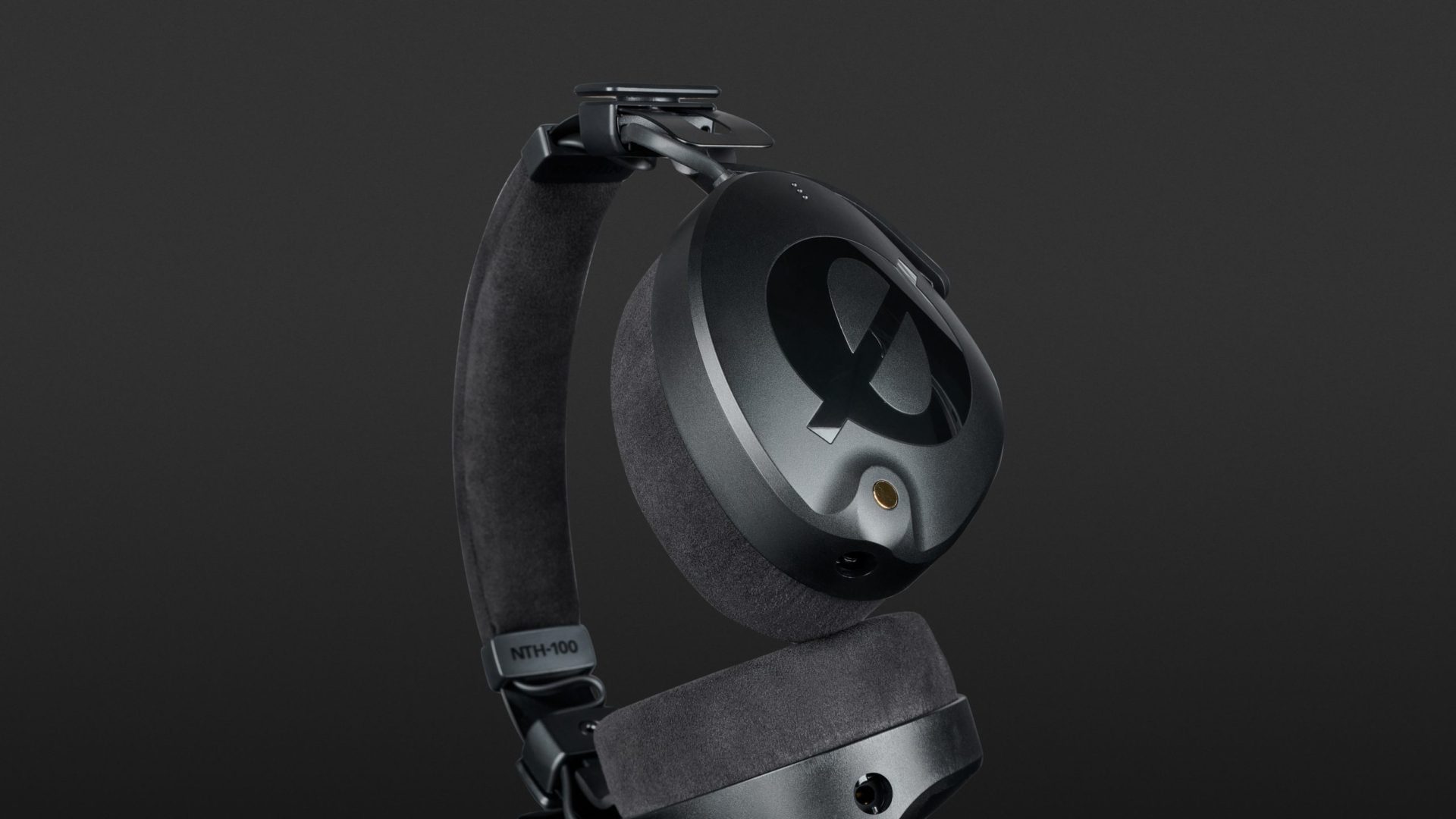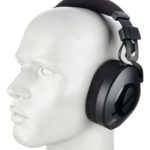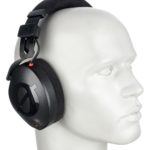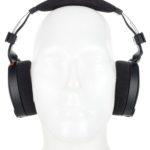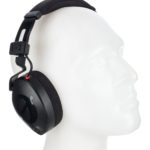The Rode NTH-100 not only impressed me with a mix of materials that was as durable as it was pleasant to use, but they also had a high level of wearing comfort. They also offer innovative features such as an infinitely variable but fixable size adjustment, rings for colour coding, a free choice of whether the connection cable should be attached to the left or right ear cup, and cooling gel inserts in the headband and ear pads. Although the overall sound image had a natural character, the audio reproduced by the NTH-100 seemed very immediate and direct. They were, therefore, less suitable for critical sound assessments. If you work with the NTH-100 you must be able to cope with the fact that the upper mids tend to distort at high volumes. Although the bass of these headphones was a little too strong for a truly linear frequency response, the sound profile of the NTH-100 was nevertheless attractive, and it should appeal to musicians for monitoring as well as to content creators for recording and streaming. Users will also benefit from the good isolation of the ear cups.
In view of their retail price, I can happily describe the price-performance ratio of the Rode NTH-100 as good with a clear conscience.
With the Rode NTH-100, the Australian manufacturer succeeds in making an interesting entry into the professional headphones market. These over-ears not only convinced us with high wearing comfort, but they also offer innovative features such as rings for colour coding or cooling gel inserts. Sound-wise, the Rode NTH-100 presented a natural character, but audio signals seemed very immediate and direct.

Rode presents their first headphones model with the NTH-100 and immediately starts with the claim to offer a professional device. These closed circumaural headphones are intended to help musicians and sound engineers as well as content creators such as streamers, podcasters and videographers in their work.
Package
The Rode NTH-100 come in a classy-looking box with a shiny gold “100” together with a detachable straight cable. It measures 2.40m and has a 3.5mm jack plug with a bayonet fitting and a conventional 3.5mm TRS jack at the ends. In order to be able to operate the headphones with a large jack socket, a 6.35mm jack adapter with screw thread is included. A carrying bag ensures that all the accessories can be transported from A to B together with the headphones without getting lost. The pouch also contains a set of identification rings that can be used to customise up to four pairs of this model for better differentiation. The enclosed rings come in the colours blue, green, orange and pink. A small rubber plug can be used to close unused feed sockets.
Material, construction and technology of the Rode NTH-100
The construction of the Rode NTH-100, which is produced in Sydney, Australia, appears solid and robust. The outer shells of these headphones are coated to protect them from scratches, and the headband features a spring steel bracket for greater durability and stability. Visually, these headphones offer an interplay of familiar, classic construction and modern design elements. This includes Rode’s use of discreet glossy black lettering on a matt black background. Technically, these headphones surprised us with a single-sided cable routing that allows both left and right connections. The earcups are ergonomically shaped and equipped with a special closure system. The velvety surfaces of the replaceable headband cushion and the replaceable ear cushions are made from the breathable synthetic Alcantara suede. This upper layer is lined with heat-repellent gel pads, which should guarantee a cool head even during longer sessions. Memory foam is supposed to ensure an optimal fit and is not only comfortable but also provides good sound isolation.
The NTH-100’s drivers have a diameter of 40 mm and are dynamically driven by powerful neodymium magnets. A three-layer Mylar membrane is used, the centre of which is covered by a phase plug. This is to improve the frequency response and the phase response of reproduction. To ensure optimal left and right side matching, the drivers are selected in pairs for each model during production. They transmit audio in the frequency range between ultra-low 5 Hz and high 35 kHz. This means they exceed the typical range of human hearing in both bass and treble. With an impedance of 32 ohms, these headphones prove to be a state-of-the-art tool that can also be used with feed players that have low output voltage. Therefore, nothing stands in the way of using these headphones with smartphones, tablets, laptops and audio interfaces. In addition, according to the manufacturer, the NTH-100 can reproduce a maximum sound pressure of up to 126 dBSPL without distortion. This should please drummers, among others, who are looking for loud, closed headphones for monitoring.
Handling
The Rode NTH-100’s interchangeable cable is securely attached to the 3.5 mm jack socket on either of the headphones ear cups by means of a bayonet catch. Since the cable can be attached on either the right or left side, a rubber plug is also included. With this, the unused socket can be closed and thus protected from dust and dirt. The blue, green, orange and pink identification rings can be clipped into recesses on both the headphone cable’s plugs. Black rings are already pre-mounted. If you do not want to distinguish the cable using a clip-on ring or if you prefer a shorter audio cable, additional NTH cables can be purchased as an option. They are available in 2.40 m and 1.20 m lengths in five colours: pink, blue, green, orange and black. This colour coding also corresponds to the different channels of the RodeCaster Pro podcast mixer and Rode Connect software, which is super handy for Rode fans.
The right and left earcup can be easily identified by both the large inner logo and using different coloured bend protectors on the cable guide. The size adjustment of the robust spring steel headband is infinitely variable. This allows the headphones to be optimally adjusted to the size of the wearer’s head. To ensure that they can always be used with the selected size once it has been adjusted, this can be fixed in place using the FitLok fastening system. All you have to do is turn the two rectangular elements on the outside of the headband guide by 90 degrees.
The earcups of the NTH-100 are circumaural, but in practice, they can feel “tight” for large ears. However, they adapt well to the shape of your head. In addition, the Alcantara cover of the headband and ear cushions is wonderfully soft and feels pleasant on the skin. Even after wearing them for a long time, I didn’t notice any problems with sweaty ears. In addition, the Cool-Tech gel had a slight cooling effect. These headphones were, therefore, more suitable for long listening sessions than almost any others I’ve tried. Thanks to their moderate weight of 344 g, these Rode headphones do not require too much pressure to ensure a secure fit. This also contributes to high wearing comfort during long periods of use.
The sound of the Rode NTH-100
Rode advertises the NTH-100 as offering an especially accurate frequency reproduction, with hardly any distortion. In addition, the sound of the NTH-100 is supposed to be particularly natural. For me, this required a relatively flat frequency response. However, these headphones reproduced bass a little too emphatically. These Australian headphones were also able to reproduce deep bass from hip hop and urban music. The presence of voices was well represented in the midrange without sibilance being a problem. I also found the richness of detail that Rode had promised. The highs were brilliant and quite finely resolved. In the super-high range, the NTH-100 scored points for tonal openness. Subjectively, the signal resolution was correspondingly impressive. Signals didn’t seem too far down in the tonal depth and made a very direct and immediate impression with the NTH-100. As a result, the audio signals had a comparatively strong “in-your-face” effect when you listened to them.
In terms of dynamics and distortion, I would say that the NTH-100 were only “well-positioned”. Especially at high volumes, these headphones reached their limits in the upper mid-range, when the S and Sh sounds of singers and speakers no longer sounded distortion-free and without hissing from the diaphragms. If you lower the upper mids and highs when listening to signals, you no longer have this problem, but you are also a long way from the promised linear monitoring. But if you’re using these headphones for monitoring on stage or on-location recording, rather than mixing and mastering, this does not matter.
The high attenuation of external noise offered by the NTH-100 will suit content creators who will be able to fully concentrate on their work with these headphones. Even if I was a little less impressed with the external acoustic isolation, musicians and engineers will undoubtedly be able to use these headphones effectively for recording purposes.
Technical specifications
- Ear couplingOver-ear
- Typeclosed
- Transducer principledynamic
- Frequency response (headphones)5 - 35.000 Hz
- Impedance32 ohms
- Sound pressure level (SPL)126 dB
- Weight with cable386 g
- Weight without cable345 g
- Cable length240 cm









